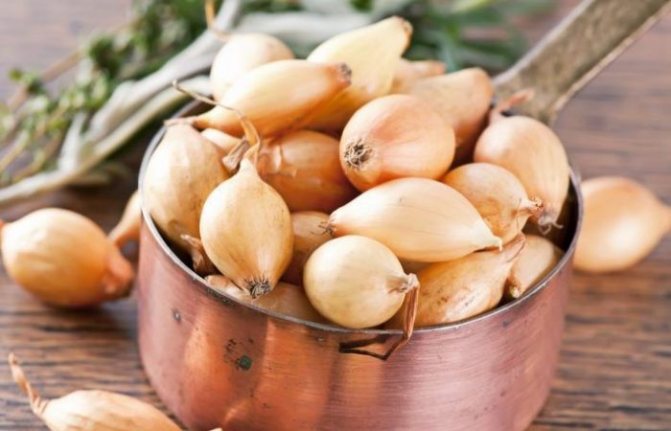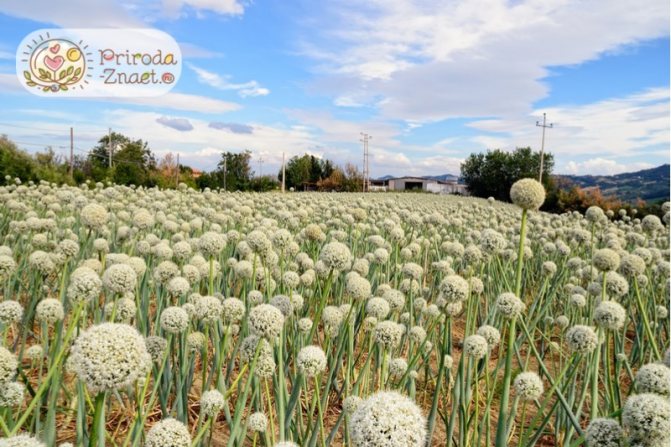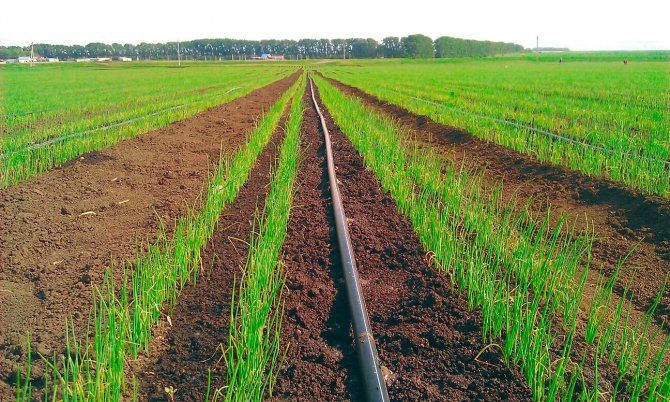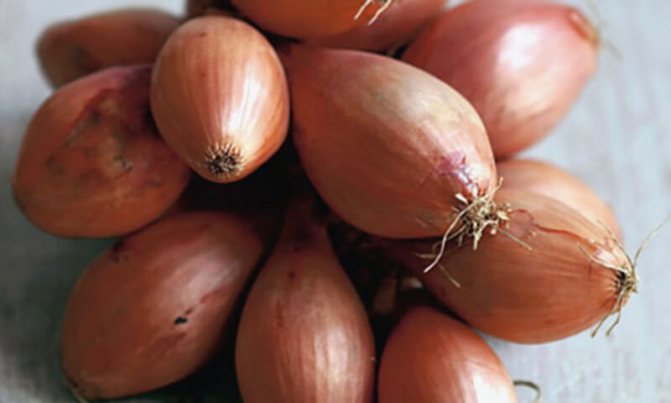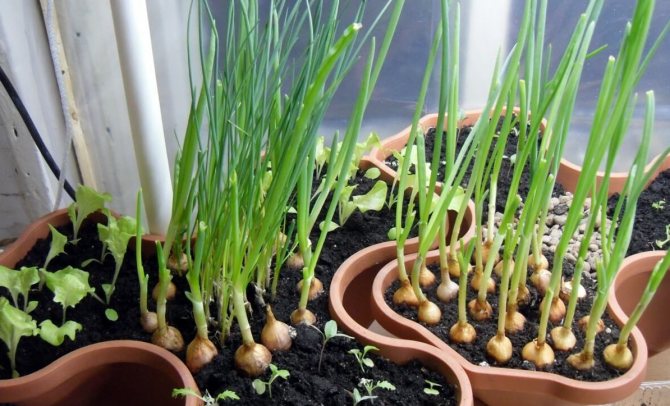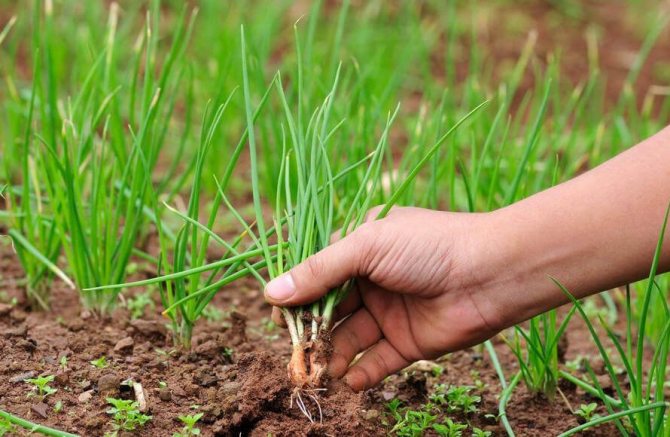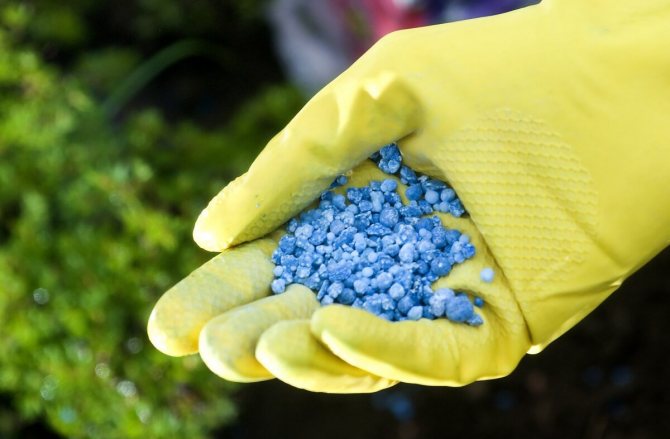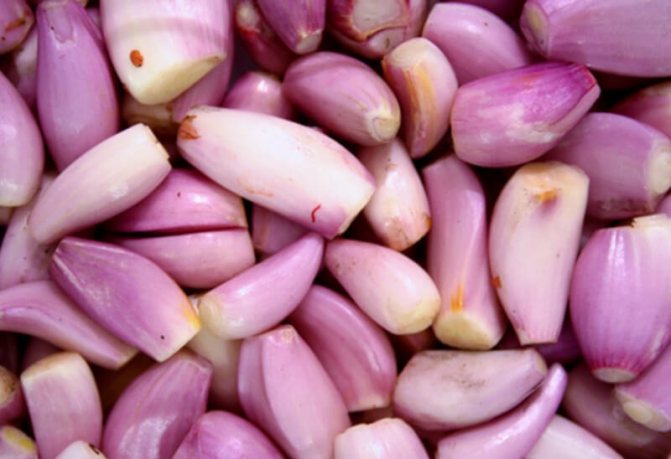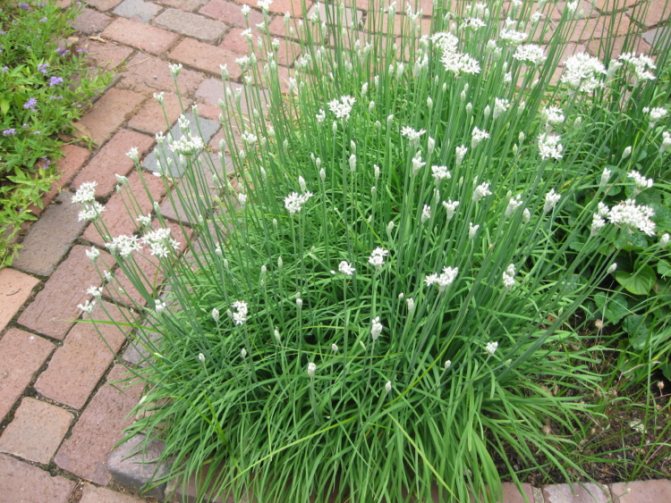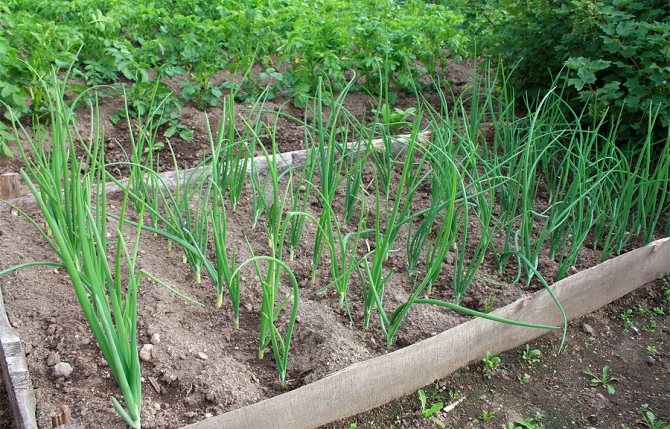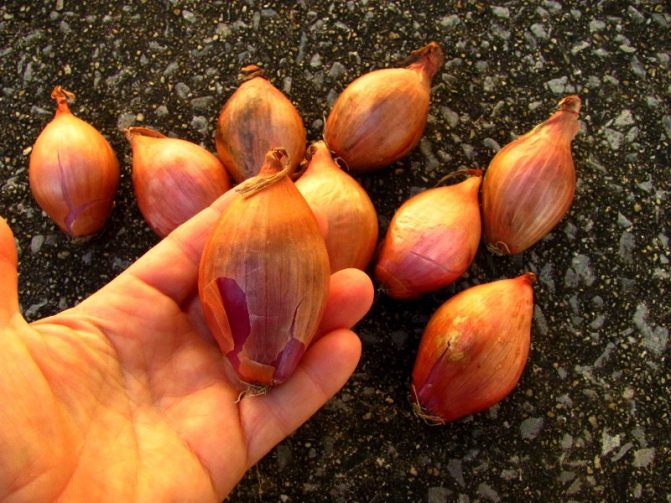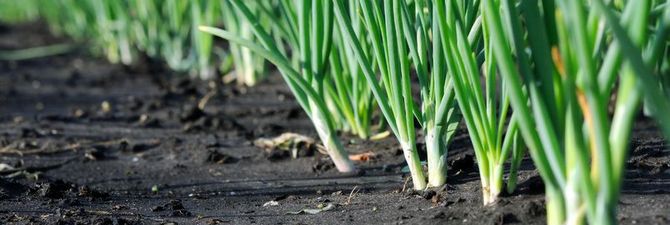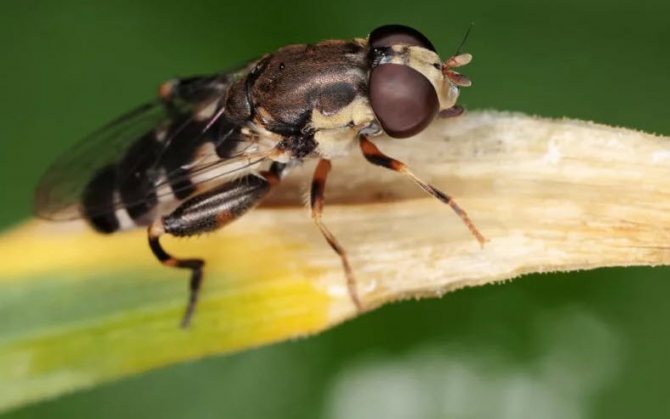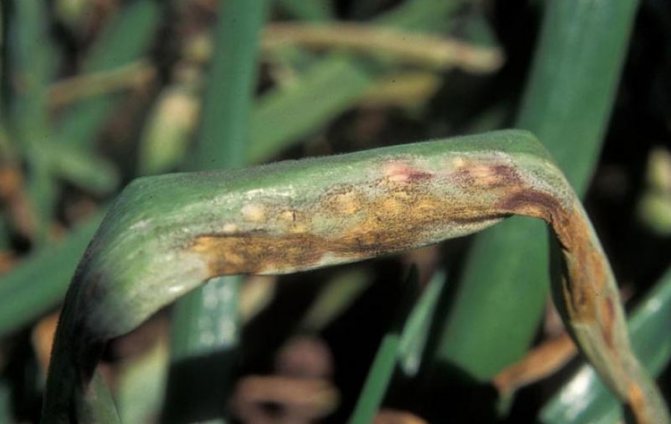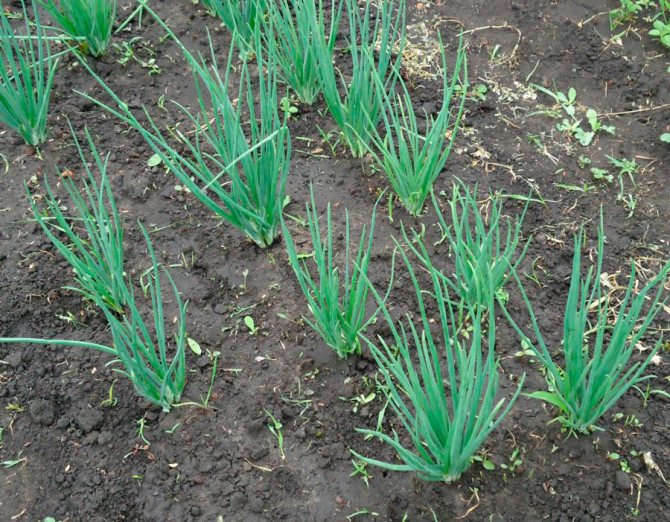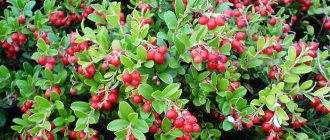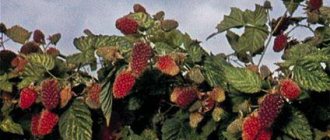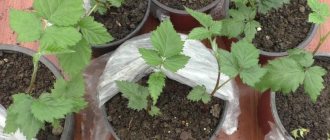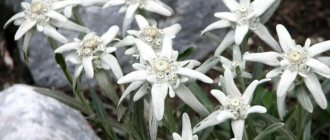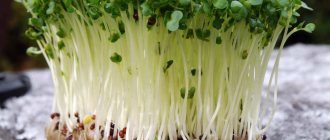Characteristics of shallots and their differences from onions
Shallots are one of the species belonging to the genus Onions of the Amaryllidaceae family. It comes from Asia Minor, which is reflected in its Latin name - Allium ascalonicum, that is, the Ashkelon onion (Ashkelon is a city in Israel). It is also called family or multi-primordial. Among the people, shallots received the following names:
- shrew;
- charlotte;
- shallot;
- kushchevka;
- bush.
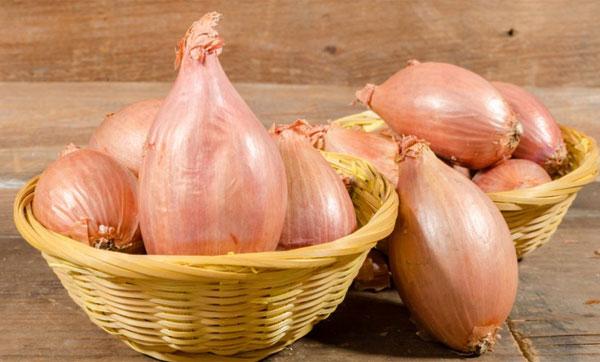
As a vegetable crop, it is mainly cultivated in the countries of Western Europe, on the territory of the CIS - in the Transcaucasia and the North Caucasus, Moldova and Ukraine.
Outwardly, the shallot resembles a traditional turnip - it also has long green feathers and bulbs. But, unlike onions, the heads of the shallots are not whole, but, like those of garlic, consist of several cloves. The differences don't end there. The feather of the shrew is thinner, shorter and more magnificent, softer and more delicate in taste, does not coarse for a long time and grows faster, so it can be cut several times during the growing season. Ripe shallots taste sweeter than onions, with little to no bitterness and a more delicate aroma. There are fewer essential oils in this onion, so it does not cause tears when cut.
Shallots differ from onions and turnips in chemical composition. 100 g of onions contain:
- proteins - 2.5 g;
- carbohydrates - 16.8 g;
- fat - 0.1 g;
- fiber - 3.2 g;
- water - 80 g.
There are a lot of vitamins in shallots, mainly such as pyridoxine (B6) - 0.345 mg, pantothenic acid (B5) - 0.29 mg, folic acid (B9) - 34 μg, thiamine (B1) - 0.06 mg, ascorbic acid ( C) - 8 mg, choline (B4) - 11.3 mg and riboflavin (B2) - 0.02 mg. Minerals in this onion are represented by macronutrients potassium - 334 mg, phosphorus - 60 mg, magnesium - 21 mg and calcium - 37 mg. It also contains trace elements: copper - 88 μg and manganese - 0.292 mg, selenium - 1.2 μg, iron - 1.2 mg and zinc - 0.4 mg.
Shallot lobules have different shapes. It can be round, elliptical, barrel-shaped, flat-elongated. Often it is incorrect, the bulbs are, as it were, crushed on one side, which is explained by their too close arrangement in the nest.
The color of dry and juicy scales is also different. The husk can be white, golden yellow, bronze, brownish yellow, pink-red and gray-purple, and underneath the bulbs can be white, greenish-white, pink, with a reddish or lilac-purple tint.
We plant on greens
Very often shallots are grown for greens. It does not shoot, and does not lose its beneficial taste when frozen. This type of onion is one of the most profitable for obtaining greens. Its feathers are cut when they reach a height of 25 cm. This usually happens a month after planting.
To get greens, shallots are planted not only in the open air, but also in special boxes in apartments or greenhouses. It is recommended to plant indoors not earlier than February, and after a month it will be possible to get the first harvest.
Experienced gardeners use the same bulbs several times. To do this, you need to cut off the greens, cut the onion slightly below the middle and plant in the same container, but with the addition of fresh soil. The planted bulbs re-harvest green feathers over time.
About the features of planting shallots in the ground, the nuances of growing - in the video.
Common varieties of shallots
Varieties of shallots, like onions, are early, as well as mid-ripening and late-ripening. More than 50 varieties are included in the State Register of Breeding Achievements of the Russian Federation, the vast majority of which were bred after 2000. Due to the unsurpassed frost resistance, which distinguishes this type of onion, any of them is suitable for cultivation throughout the territory of the Russian Federation.
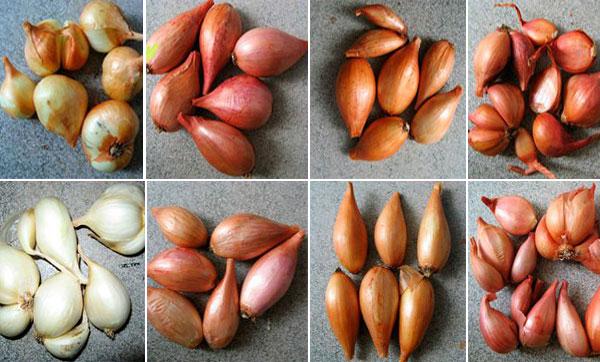

On an industrial scale, shallots are not cultivated in Russia, all varieties are intended for growing in the backyards and summer cottages of amateur vegetable growers. Of the most promising varieties, the following can be distinguished:
- Bonilla (year of inclusion in the register - 2000) is a mid-season variety bred in Holland. Designed for cultivation in a 1-year culture from seeds. The ripening period of the bulbs from the moment of full germination to lodging of the feather is 82-87 days. Bonilla's bulbs are round, multi-edged (from 4 pieces), peninsular, reaching a mass of 30-39 g. The cover scales are yellow-brown. The yield of the variety is 1.5 kg / m2. Keeping quality is excellent, can be used for forcing on a feather.
- Berezovsky aristocrat (year of inclusion - 2015) is also a mid-season variety, but already of domestic selection. Designed for cultivation in a 2-year culture. The bulbs of the Berezovsky aristocrat are broadly elliptical, large (60 g), there are 5-7 of them in the nest. The outer scales are dark yellow with a slight brown tint, the inner ones are white. This shallot has a semi-sharp taste, its yield is 1.6 kg / m2.
- Yellow Moon (year of inclusion - 2015) - mid-early variety, recommended for growing from seedlings. The bulbs are round, weighing 35-45 g, in 1 nest there are from 4 to 10. The integumentary scales are yellow with a brown tint, juicy - white. Productivity - 2.5-3 kg / m2.
- Krepysh (year of inclusion - 2009) is a mid-late variety bred by Siberian breeders. It is recommended to cultivate through the sevok. Krepysh's bulbs are round, small (30 g), 4-6 pcs. in the nest. Their dry outer scales are pink, juicy - reddish. The yield of the variety is 2.1 kg / m2.
- Smart (year of inclusion - 2011) - mid-season variety, recommended for cultivation through sets. Bulbs are round, weighing 55 g, 5 pcs. in the nest. The integumentary scales are dark red with a brown tint, juicy - purple. The taste of the bulbs is semi-sharp, the yield of the variety is 2 kg / m2.
- Siberian amber (included in 2009) is a late-ripening variety. The bulbs are round, weighing an average of 28 g, 6-7 pieces each. in the nest. The color of the husk is yellow-bronze, the juicy scales are white. Shallot tastes Siberian semi-sharp amber, its yield is 1.5 kg / m2.
- Khlynovsky (year of inclusion - 2015) is an early ripening variety, suitable for growing from seedlings. Broadly elliptical bulbs, weighing 50 g, no more than 9 pcs. in the nest. Productivity - 3.1 kg / m2.
Harvest
It is important to harvest on time, otherwise there is a possibility that the bulbs may germinate. Shallot nests are removed from the ground when most of its feathers are dry. After removing from the soil, the onions must be dried in the shade. After that, the dried leaves are carefully removed, and the nests are disassembled into bulbs. The crop is folded in a box, net or box and stored in a cool, dark place where there is no high humidity.
Sometimes experienced summer residents do not cut dry feathers, but weave braids from them. In this way, you can extend the shelf life of the onions, but do not forget about regular checking for rotten bulbs. This method will make it possible to preserve the product from 5 to 7 months.
Sometimes shallots are stored peeled, but this option can only be realized by freezing the vegetable. In the same way, you can store its feathers; it is recommended to chop the onion before freezing. Do not be afraid that after freezing shallots will lose their useful qualities - frozen onions will retain vitamins and important elements.
Growing shallots is not difficult, the main thing is to follow all the recommendations and feed them on time. Do not forget about regular checks for the presence of insect pests, because the earlier the disease is detected, the more vegetables can be saved.
The benefits and harms of shallots
What exactly benefits and harms shallots bring to the human body has long been established by experts. Nutritionists argue that this product is more dietary than the onion-turnip familiar to everyone. It contains 2 times more sugars and vitamins, but less essential oils. And, although the calorie content of shallots is higher than that of its "relative" onions (72 kcal versus 41 kcal), it is recommended even for overweight people.


This onion is not only an excellent food product, but also a medicine. Popularly, its juice is used to treat colds, eye and digestive system diseases, as well as to heal wounds and reduce tissue inflammation.
But, despite all the useful properties, shallots can sometimes cause harm. People with diseases of the liver, kidneys and pancreas, as well as those suffering from chronic bronchitis and constipation should refrain from using it.
Taster reviews
Tasters note that shallots are especially in harmony with:
- rosemary;
- thyme;
- balsamic vinegar;
- olive oil.
According to the tasters, shallots are especially tasty in sauces and marinades served with chicken and lean beef. Also shallots go well with garlic and curry.
Shallots are quite undeservedly inferior to onions in popularity. Outperforming the competitor in many respects, including the taste of green feathers and delicacy of taste. Shallots deserve closer attention, both gardeners and lovers of culinary delights.
Landing features
Shallots can be cultivated in many different ways. Most often, gardeners on their own plots prefer planting the bulbs of this plant in the ground. This operation is carried out both in spring and autumn. It all depends on the goals for which this culture is cultivated. Shallots are grown for the sake of early juicy greens, but in addition, many leave it for the turnip, which is used as a regular onion and for forcing feathers in winter.
In addition, there is another way of plant propagation. Sometimes shallots are grown from seed by sowing nigella in the beds to get mature bulbs at the end of the season. In this case, the planting material is embedded in the ground at a shallow depth, covered with fertile soil, and then cultivated according to the technology standard for this onion. They do this to update their own planting material.
Depending on the region, seeds are sown in spring or autumn. Winter landing is practiced only in the south. Despite the fact that the culture is distinguished by increased frost resistance and tolerates negative temperatures well, the germination of shallot seeds is not very high, and severe winters can reduce it even more.
Seat selection
Like any vegetable crop, shallots prefer fertile, well-cultivated soils that contain sufficient moisture and nutrients. Plants are not selective for the type of soil, which cannot be said about its mechanical composition and acidity. The gardeners get the best results on light sandy loam and loam, well filled with organic matter and other mineral additives, with neutral pH values.


In order to successfully grow shallots, a plot for it is prepared in summer (for planting bulbs and seeds before winter) and in autumn (for spring work). They choose plots well-lit by the sun, on which zucchini, cucumbers, legumes, potatoes or tomatoes have grown before. Do not plant shallots after carrots, beets and garlic. Also, you should not place this type of onion next to a common turnip, and also plant it in the same beds for several years in a row.This contributes to the development of diseases and pests, which negatively affects the subsequent harvest.
When preparing the soil, 3-6 kg of good humus are applied per 1 m2 of the plot, 2-3 tbsp. l. ash, 1 tsp. superphosphate and urea. The beds are dug deeply, the soil is not leveled, but left in the layers before planting. In the spring, 25 g of potash or ammonium nitrate is added to 1 m2 of area prepared for shallots.
Landing before winter
The autumn planting of shallots begins with the preparation of the planting material. First, it is examined and calibrated. Sick and pest-affected specimens are removed. For planting on a turnip, medium-sized bulbs are selected, which give the largest yield, those that are smaller are left on the feather. Selected bulbs are disinfected in solutions of fungicides, copper sulfate or potassium permanganate. Then they are dried.
The approximate dates for planting shallots before winter are in October and coincide with planting garlic. Work begins almost before the very frost, 1-2 weeks before a steady cold snap. During this time, the bulbs will have time to grow small roots, but will not let the feather go, which will enable them to successfully survive the winter.
Shallots are planted according to the following scheme: 20-30 cm are kept between rows, plants are placed in a row with an interval of 5-15 cm. Bulbs intended for forcing a feather are placed in a row more often, less often when planting on a turnip.
The planting material is deepened into the furrows so that there is 2-3 cm of soil above the neck. The field of planting the bulbs, the grooves are covered with fertile soil or covered with peat. When cold weather sets in, the beds with shallots are covered with mulch: sawdust, dry leaves, spruce branches, etc.
When planted in winter, the bulbs do not stimulate growth, otherwise they will not survive the winter. The onion itself will start to grow at the onset of the first heat. The advantage of this planting is that in the spring shoots appear very early in the beds, and the first green feather can be on the table as early as May.
Spring planting
Shallots are able to grow and develop at fairly moderate temperatures. Therefore, in the spring it is planted in the ground in April or May, when the topsoil warms up to 5-10 ° C. With this method of growing shallots, they use the same planting scheme as in the fall. The bulbs are also disinfected and sorted into fractions. To stimulate feather germination, their necks are cut short or the planting material is soaked in growth regulators.
When growing shallots from seeds, planting is carried out at the same time. The distance in the row spacing is left the same. Etched in disinfectant solutions and dried nigella is sown like an ordinary onion in furrows up to 1 cm deep. Then they are covered with fertile soil, which is kept moist until shoots appear.
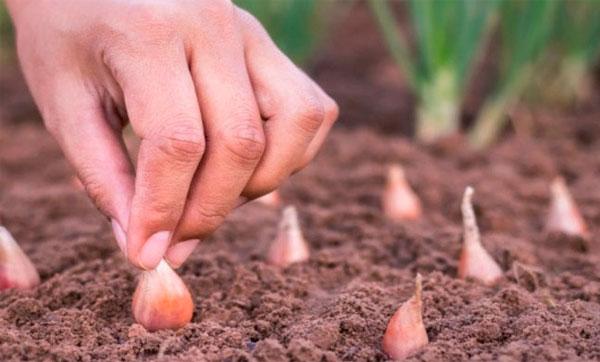

Harvest family - description, features of vegetation
The scientific name of the biennial plant is Allium ascalonicum, when reading the transcription - Ashkelon onion, from the ancient Palestinian city, where it was cultivated already in the III millennium BC. e.
The main organ of vegetative propagation is a bulb with many daughter buds (primordia), which germinate simultaneously and form a nest of small elongated heads - from several to several dozen per plant. For this feature, shallots were named family.
It is not necessary to grow shallots from seeds to get a planting bulb (set). A turnip of any growing season is suitable for planting and gives a full harvest. Seed propagation is used to renew the variety, to prevent its degeneration.
The undoubted merit of culture is its universality. Due to its branchiness, shallots are used for growing on a feather. A lot of greens are obtained, with a delicate consistency, with a mild taste.
Note! One set the size of a walnut will give life to a “family” of an average of 4-10 bulbs with a total weight of 200-300 g, sometimes up to 500 g. The name of the shrike is not an exaggeration - some varieties produce nests of 20-30 “teeth”.
Features of growing and care
Shallots, like any vegetable crop in the garden, require some attention. It must be watered, fed with fertilizers, loosened between the rows and thinned out (to obtain a large turnip). Only with such cultivation and care can you count on decent yields.
Shallots have a special need for moisture at the beginning of their growing season. But he also does not tolerate stagnant water at the roots, so the plantings are watered only as the soil dries up. The frequency with which it is worth watering shallots depends on the weather conditions in the region, the air temperature and the type of soil in the area. In the middle of summer, the amount of watering and the rate of fluid are reduced. Irrigation is stopped completely 15-20 days before the expected collection of the bulbs. In between waterings, the soil between the rows is loosened and all weeds are removed.
Fertilize shallots 2 times per season:
- the first time the plants are fed 10-15 days after the emergence of all shoots. Use liquid organic matter (manure, chicken droppings) or nitrogen mineral compounds;
- the second feeding is carried out when the bulbs begin to form on the shallot. Plants are fertilized with complex preparations (nitroammophos or nitrate + superphosphate + potassium sulfate). Humus and ash will give the same result. Fertilization with fresh organic matter is enough to distill the feathers.
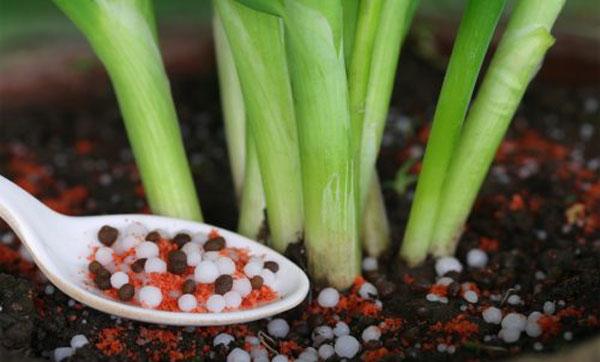

When growing shallots for turnips, thinning the plants helps to get larger bulbs. It is held in June. Some of the small bulbs are removed from the nest, while the rest are added in weight and size. However, this must be done carefully so as not to damage the shallot root system.
Sowing
Reproduction by seeds of shallots is almost the same as propagation of onions:
- since shallots have small seeds, they are sown at the rate of 0.4-0.6 grams per square meter;
- to obtain their seeds, part of the onion garden (approximately 10%) is allocated for shooting in the second or third year of cultivation;
- shallots prefer soils with low acidity;
- The best predecessor for shallots is legumes.
Important! Soil care: before sowing seeds, the soil in the garden should be fertilized with compost or humus at the rate of 3 kilograms per square meter.
Shallots can be grown not only from seeds, but also vegetatively, as mentioned at the beginning of this article. Planting bulbs is discussed in detail in the following video:
Diseases and pests
Shallots are capable of attacking various pests and diseases. Among fungal infections, it is worth highlighting cervical rot, false and true powdery mildew, fusarium wilting. In addition, the beds can be affected by onion nematodes and flies. In hot weather, aphids often parasitize on feathers.
Pesticides are most effective in combating them, but when using them, there are restrictions on the use of greens and bulbs for food. If the situation is not too neglected, it is better to do on your site with folk remedies.
To prevent the appearance of diseases and pests, it is necessary to observe crop rotation, replace old planting material in a timely manner, and abandon planting obviously sick and suspicious bulbs on the beds. You cannot plant shallots next to other types of onions - they have the same diseases and pests that accumulate and overwinter in the soil.
Recommended to read
What to do if the onion turns yellow in the garden
Storing onions in the winter at home
How to properly dry onions after harvesting from the garden
What to do if the onion rots in the garden and during storage
Wild culture varieties
The following varieties of wild onions are popular among gardeners:
- Branched. The variety is sometimes referred to as mountain or Chinese garlic. The foliage is flat, but juicy and erect. The main feature of this variety is the taste of garlic, which are mixed with onions. Greens are suitable for consumption from mid-summer until the first frost. The green feather continues to grow until autumn. But the onion itself is not eaten.
- Victorious. A distinctive feature is the taller oval-shaped pouring. It grows throughout Russia, including the Far East, as well as in Europe.
- Bearish. In appearance, it looks a little like a familiar bow, but it is. It grows most often on mountain slopes and in forests. The bulbs grow small, only 1 cm in diameter. But at the same time, the stem can reach up to 50 cm in height. The foliage is oval, up to 5 cm wide, flat in structure. The base of the leaf plate and the top of the bulb are purple.
The pungent taste is not so pronounced. It is used in the autumn to replenish vitamins in the body. It is advisable to cut the greens before the foliage opens, then it becomes tough. - A priori. Refers to mid-season varieties. You can cut the first greens at the end of May. The bush is characterized by high branching. Differs in a high content of vitamin C.
- The most popular variety is called Piquant. It is characterized by juicy soft greens and frost resistance. Also rich in vitamins.
Harvest time and storage
Harvesting shallots, which were grown for turnips, begins in July. You can dig up plants from the garden when most of the greenery dries up on the bushes. Overexposing the shallot in the ground is not worth it, it can easily germinate again. The bulbs sown with seeds in spring will have to be dug out a little later, around August or September.
Harvesting onions is easy. The bushes are carefully undermined with shovels or pitchforks, removed from the ground and disassembled into separate fragments. The harvested crop is well dried in the sun or under a canopy. The tops are cut off, leaving a small neck about 2-3 cm. Large bulbs can be braided into braids.
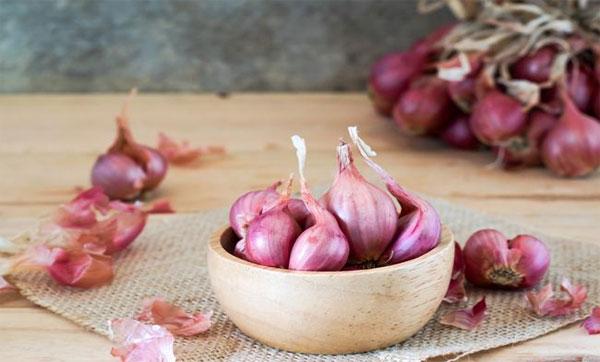

They store shallots at home, like ordinary onions. It is folded into small boxes made of wood or plastic, vegetable nets, perforated cardboard boxes. They are kept in cellars, basements, in insulated sheds, garages and on the balcony in the apartment. Shallots in braids last especially long.
Planting onions before winter
Winter planting differs little from spring planting. Everything happens in the same order, but only with the mulching of the site with peat in a layer of 4 cm. For the winter, the shallots are planted a little deeper.
Do not pay too much attention to the fact that shallots are frost-resistant vegetable crops.
It is best to plant the culture in the southern regions before winter, otherwise there is a risk that half of the bulbs will die from the cold. This is the only disadvantage that should be taken into account when planting before winter. But there are also positive aspects: bulbs that endured winter frosts well give much more greenery than when planted in the spring. Shallot feathers appear after the snow melts.
Using
The most famous use of shallots is in cooking. It is used as an ingredient for preparing various dishes; greens are cut into salads. Small onions and feathers are frozen or pickled. Fresh shallots can act as a substitute for onions. But it can also be used in dietary and medical nutrition, to fight diseases and prevent various ailments. By its properties, shallots are similar to ordinary onions and will act on the body in the same way.
Where is the delicacy used?
The special flavor characteristics of shallots attract the attention of gourmets. This vegetable is not only healthy, but also gives the dishes a special taste and unique aroma.
Shallots and onions are not interchangeable vegetables. These are two completely different ingredients.
Why shallots are in demand in cooking:
- has a delicate onion taste without characteristic bitterness, harmoniously combined with tomatoes, radishes, cucumbers and other vegetables;
- harmonizes with the creamy taste of avocado;
- contains a lot of sugar, therefore it caramelizes better than onions;
- small and dense onions are more suitable for pickling - excellent pickles are obtained;
- ideal for baking - shallots are delicious baked in combination with butter, honey and dried fruit;
- shallots when fried, especially in butter, gives much more flavor than onions;
- it is easy to remove the husk from the shallots with boiling water.
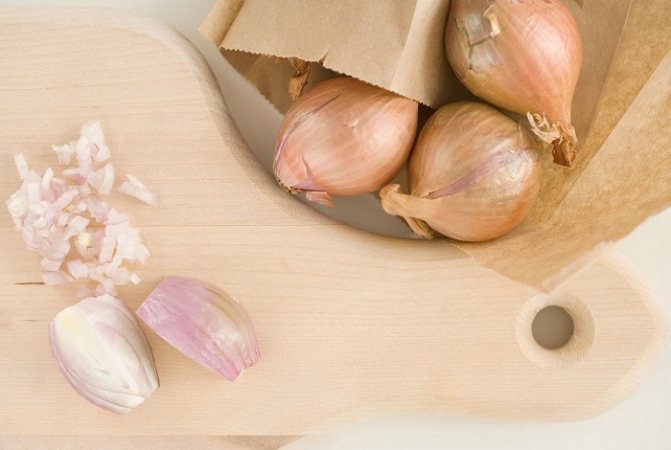

How shallots are used in cooking:
- Seasoning for meat. The onions are finely chopped or cut into rings. They are poured over ready-made meat - baked in the oven or shish kebab.
- Side dishes. The simplest onion garnish is prepared by frying. The onions are peeled and fried whole. When they are softened, they are removed from the heat and served as a side dish with meat dishes. The second option for preparing a side dish is baking. By mixing olive oil and honey, a thick sauce is obtained. Onions are poured with this sauce, sprinkled with spices and put in the oven for 30 minutes (temperature +150 ° C). You can add dried fruits or crushed nuts to the resulting caramel casserole.
- Fillings for pizzas and pies. Chopped onions are fried in oil and added to the filling. Fried onions go especially well with meat and fish fillings.
- Salads. The delicate taste and soft consistency of the bulbs are ideal for fresh vegetables.
- Cream soups. Shallots are used as one of the key ingredients in many soups. An example of making a creamy soup with spinach, shallots and garlic:
- 0.5 kg of spinach is blanched in salted water, squeezed and chopped in a blender;
- chop onion and garlic and fry in olive oil;
- 1.5 kg of spinach leaves are added to the onions and garlic, and continue to fry;
- mix the fried mixture with the green puree, season and stir.
- Sauces. Shallots add spice to many sauces without overshadowing the flavor of other ingredients. Onion-wine sauce:
- The onions are chopped and fried.
- Red wine is mixed with potato starch. Stir and add to the onion.
- Sprinkle the mixture with spices and stew for 10 minutes.
- Blanks. Shallots are especially popular for pickling. How to pickle shallots:
- A standard marinade is prepared from spices, salt and sugar. Vinegar is poured into the boiling marinade.
- The bulbs are placed in jars and covered with marinade.
- The jars are sterilized for 10-15 minutes and sealed with lids. It turns out a ready-made appetizer and a base for salads.
When cooking shallots, care must be taken - if overcooked, it will acquire an unpleasant bitter aftertaste.
Shallots are used in folk medicine. Its use is useful for:
- vascular diseases;
- unstable blood pressure;
- cardiovascular diseases;
- metabolic disorders;
- malfunctions of the digestive system.
Shallots are a source of potassium and sodium and are therefore especially beneficial for heart function.
This vegetable can work as a catalyst - it promotes the breakdown of fats and their absorption by the body. And carotene, which is part of the shallot, improves the functioning of the eye muscles, the condition of the retina and lens.
Shallot: beneficial properties
The beneficial properties of shallots are determined by the high content of vitamins (especially vitamin C) and minerals. Regular consumption of this vegetable improves the functioning of internal organs and the whole body as a whole:
- blood pressure is normalized;
- the walls of blood vessels are strengthened;
- the level of cholesterol decreases;
- immunity increases;
- the work of the digestive organs improves;
- the pathogenic flora is destroyed;
- improves vision.
The vegetable contains antioxidants that remove toxins and harmful cholesterol from the body. The inclusion of shallots in the diet has a beneficial effect on the condition of hair and nails.


For its delicate taste and delicate aroma, shallots are called a delicious vegetable. It is added during the preparation of first and second courses, as well as in salads. Onions are pickled, frozen, dried.
See also
Why the bow can go to the arrow, what to do and can they be cut off? Read
Preparing the beds
Shallot grows well in open areas, where sunlight freely enters. Therefore, you need to plant away from trees and shrubs. The soil should be fertile, not acidic, loose and light. Acidic soil degrades the quality of the crop. The bulbs become small and lose their beneficial properties.


The best predecessors for shallots are legumes, cucumbers, zucchini, cabbage, tomatoes. Do not plant in beds where sunflowers, carrots, corn, garlic and beets have been harvested before. Carrots, radishes, cucumbers, strawberries can be planted in the vicinity of onion beds.
When the shallots are planted in the open ground in the spring, the soil is prepared in the fall. The earth is dug up and fertilizers are applied (for example, rotted manure). In the spring, the soil is loosened again and mineral fertilizers are applied. You can plan beds in the area where the lawn grows. The work begins with removing the sod wide in the future bed, and the passages are left untouched.
A very fruitful vegetable!
I have not heard of this type of onion before. But in the spring of last year I was driving to my dacha and far beyond Volokolamsk in the village of Suvorovo I saw on the side of one of the local houses a table on which there were boxes with such a bow offered for sale. I slowed down, called the hostess, talked - she explained that onions are unpretentious in cultivation and cultivation. And I just wanted to buy some local variety so that it would be exactly adapted to the surrounding climatic conditions.
I planted everything in the box on the garden bed - as I remember now, it turned out four hundred and twenty bulbs. And they all ascended successfully. And they grew up. And then my wife and I dug this onion and dried it. In the autumn, it was decided to test part of the onion for frost resistance, use part for food and plant the rest in spring - in case the first ones still freeze.
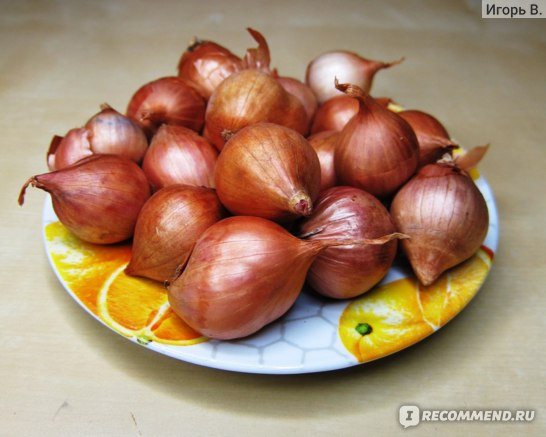

For food, this onion is still too small. No, when it's still green, the arrows are good. But the onion itself for cooking borscht is too small - you need to clean at least a dozen of them in order to cook the first pan. In addition, when baked, it turned out to have an unpleasant bitterness. Although you can eat it just like that - with fresh black bread, and with a piece of good bacon, you get an excellent appetizer.
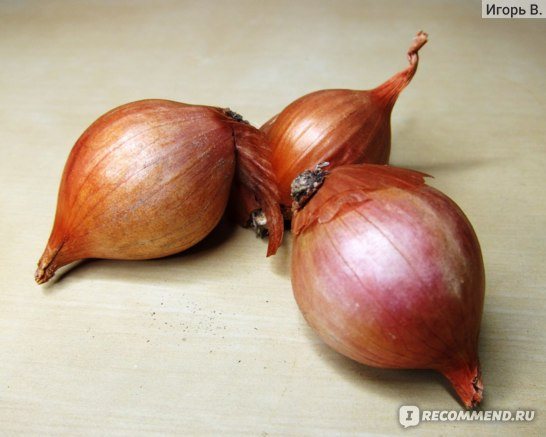

As for the planted before winter, he also partially died. Apparently, after all, some of the bulbs could not withstand the frosts, although this winter they were still not the strongest. Those that survived sprouted and began to grow in the arrows. But this year I decided to feed the plants a little, for which I bought a package of special fertilizers for onions and garlic.
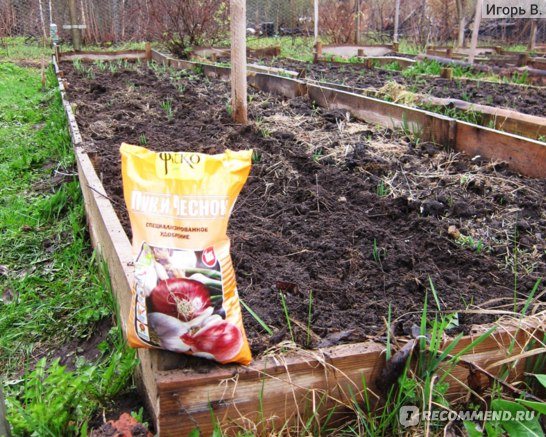

In general, these are the features of the family bow. Decide for yourself whether this is right for you.
«>
31
Description of the species
The first reliable description of a shallot species dates back to 1261. Supposedly, they began to grow it in the Middle East 5000 years ago. From there it spread to Egypt, Greece, India. In the Middle Ages, he came to Normandy, where he quickly gained popularity. Nowadays, almost no sauce in French cuisine is complete without the addition of shallots. It has been known for a long time in the Caucasus, the Far East, Ukraine and Moldova. A relatively new culture is for Siberia, the Russian Non-Black Earth Region.
Shallots in the photo and in reality are very similar to ordinary onions or leeks, although in fact they differ from them in many ways. The difference is that its turnip consists of several cloves, like onion or garlic. The mass of the bulbs is small, 15-30 g.When planting, not the bulbs themselves increase, but their number. The total weight of "kids" can reach half a kilogram and more, in one hole there are from 4 to 40 pieces.
The feather of the shallot is juicy, fragrant, with a sweetish aftertaste and not as hot as that of onions. Greens are early ripening, almost never become tough. You can cut the feather completely several times during the season. Small bulbs grow new leaves quickly, especially when transplanted in summer. Northern onions are white with a pungent taste. Southern ones are red, semi-sharp or sweet.
The beneficial properties of shallots can hardly be overestimated. It contains much more vitamins than regular onions. Here are the approximate composition of shallots:
- vitamins B1, B2, PP, carotene;
- ascorbic acid - in leaves 54.9-70.8 mg, in bulbs 5.7-8.3 mg per 100 g;
- essential malas - in bulbs 28.0-34.0 per 100 g
- dry matter - in leaves 8.5-10.7%, in bulbs 14.2-22.0%
- sugar - in leaves 2.8-4.0%, in bulbs 8.1-13.6%
- proteins - in leaves 2.0-2.8%, in bulbs 2.9%
When fried in butter, shallots give a special aroma, for which they are appreciated by culinary experts. It is used to prepare dishes of both European and Asian cuisine. Under the influence of temperature, it caramelizes better than normal, since it contains more sugar. The most popular variety is the échalote grise with white oblong bulbs.
What are the varieties
Many summer residents are interested in how shallots look like, what types are there and how to grow it correctly. He has a lot of varieties. Basically, they are all regional and derived from local crops for certain climatic conditions. Among the most popular varieties, it is necessary to highlight such as:
- "Kuban yellow";
- "Belozerets";
- "Kunak";
- "Berezovsky aristocrat";
- "Sturdy";
- "Sire-7".
Variety "Kuban yellow" refers to the peninsular, medium early. It is drought tolerant. The bulb is quite dense, round-flat, with 3-4 primordia. The total weight of the slices from one bush is 65-100 g.
The "kunak" variety belongs to the mid-season and its growing season is 90-100 days. It has dry, yellow scales with a slightly brownish tint. Its keeping quality is high, and its taste is spicy.
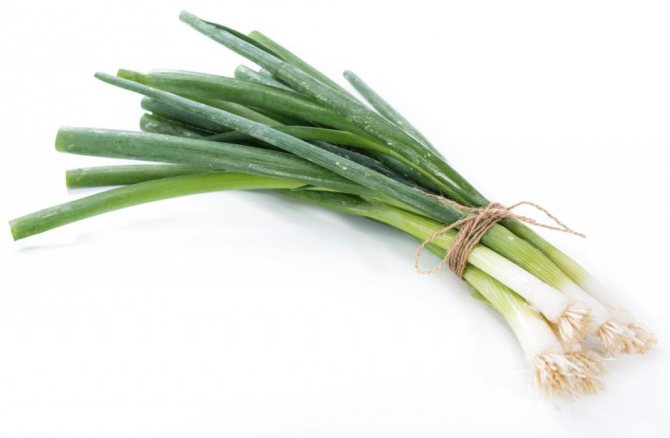

Variety "Belozerets-94" refers to early maturing. The growing season is only 85 days. The total weight of bulbs from one bush is 100-120 g. Its individual heads are oval and rather dense. They are dark lilac in color. This variety is very productive.
Variety "Sir-7" refers to early ripening. The bulbs have a sharp taste, round-flat shape, and their weight is 20-40 g. The color of the scales is golden yellow, with a slight pinkish tinge. One bush contains 4-7 bulbs. It has a very good keeping quality.
The plant shallots of the "Berezovsky aristocrat" variety belongs to the mid-season. Its slices have a wide elliptical shape. They are quite large, about 60 g, and in a bush there are 5-7 pieces. The outer scales are dark yellow with a brownish tint, while the inside is white. Its taste is semi-sharp.
The "sturdy" variety belongs to the middle late. It is recommended to grow it through a set. Its bulbs are small, rounded, 4-6 pieces per bush. The outer scales are dry, pink, and the inner ones are rather juicy, reddish.
Site and soil selection
Shallots, the cultivation of which has its own characteristics, are bred both for the sake of green feathers and for the sake of the bulbs themselves. To harvest a good harvest of onions, you must choose the right place for planting and carefully prepare the soil:
- This culture loves open, sunny areas, unshaded by shrubs and trees. When choosing a landing site, be sure to take this into account.
- Particular attention should be paid to the soil. Shallot loves loose and non-acidic fertile soils. Acidic soils are absolutely not suitable for growing shallots. On them, the leaves of the onion quickly turn yellow, and the bulbs eventually shrink and dry out.In areas where groundwater is close to the surface of the earth, it is correct to grow shallots with good drainage.
- It is important to know which predecessors grew in the areas planned for shallots. It is recommended to plant shallots after all types of cabbage, legumes, potatoes, zucchini, pumpkin, tomatoes and cucumbers. It is undesirable to plant onions where sunflowers, corn, garlic, beets and carrots grew. It is better to choose all kinds of salads, carrots, cucumbers, radishes, strawberries in the shallot neighbors. They all benefit each other. For example, carrots are capable of scaring off an onion fly with their smell, for which the shallot thanks the carrot in the same way - it does not allow the carrot fly to hit the vegetable. But growing nearby legumes, herbs, parsnips, broccoli, spinach, turnips can depress the culture. It is especially undesirable to plant shallots near onions, as they can interbreed, thereby losing their individual qualities.
- Before planting, the soil must be dug up and well fertilized with organic matter and minerals.
- It is not recommended to grow shallots from seeds in the same place for more than 3 years.
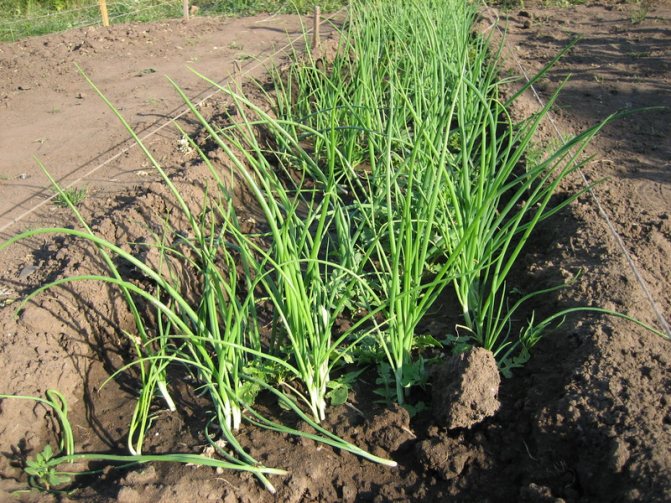

Eating
Shallots are eaten both fresh and processed. Greens are added to salads, meat dishes and soups for a spicy flavor. It is also included in a variety of sauces, marinades and preserves.
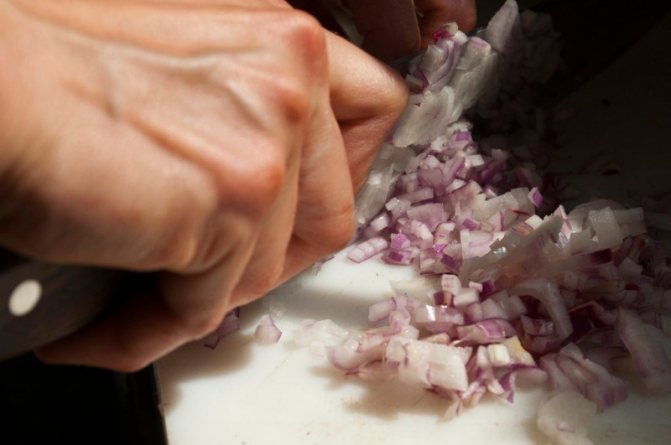

Shallots are less aggressive than onions and have a pleasant taste. They are often used in French cuisine.
Cooking recipes
Delicious chicken pate with shallots is a great snack option that will pleasantly surprise guests.
Ingredients:
- shallots - 3 heads;
- chicken liver - 300 g;
- chicken broth - 0.4 l;
- sunflower, olive and butter;
- fresh herbs;
- salt.
Algorithm of actions:
- The liver is placed in broth, slightly salted and a little olive oil is added. After that, turn on the fire and cook until tender. Then the liquid is poured out, and the liver is transferred to the blender bowl.
- The shallots are chopped, browned in a pan and sent to a blender. All components are ground together with butter and salt.
- Sandwiches are made with the resulting pate, which are sprinkled with herbs.
Another great cooking method is pickling. Such onions are in perfect harmony with fish and meat dishes.
This will require:
- shallots - 0.5 kg;
- beets - 1 pc.;
- water - 1 glass;
- garlic - 4 cloves;
- bay leaf - 2 pcs.;
- black and allspice - 10 peas each;
- cloves - 3 peas;
- vinegar and vegetable oil - 2 tbsp each l .;
- sugar - 1 tbsp. l .;
- salt - ½ tbsp. l.
Algorithm of actions:
- Water is poured into a saucepan, vegetable oil, vinegar, sugar, salt, spices are added. Then they put it on the fire.
- Onions and beets are washed and peeled. The latter is cut with thin plates.
- When the water in the pan boils, put the prepared vegetables into it.
- The fire is turned off, the components are allowed to cool slightly. Then they are placed in a sterilized jar and hermetically sealed.
In this form, onions are stored for up to six months. You don't need to add beets, they are only needed to give the red color.
Growing onions
Shallots rarely produce arrows, so cultivation from seeds is preferred by specialists. But this does not mean that, if desired, gardeners will not be able to do this on their plots. It is very difficult to collect seeds yourself, but they can be purchased at specialized stores. And if you do decide to get shallot seeds yourself, follow this way:
- Select the highest quality bulbs that have a shelf life of at least 4 months at temperatures between +4 and +12 ° C.
- The bulbs are planted in open ground in early May. After such vernalization, they will quickly shoot arrows with flowers from which it will be possible to collect seeds.
- An important condition for this process is not to plant shallots near other types of onions so that cross-pollination does not occur.


